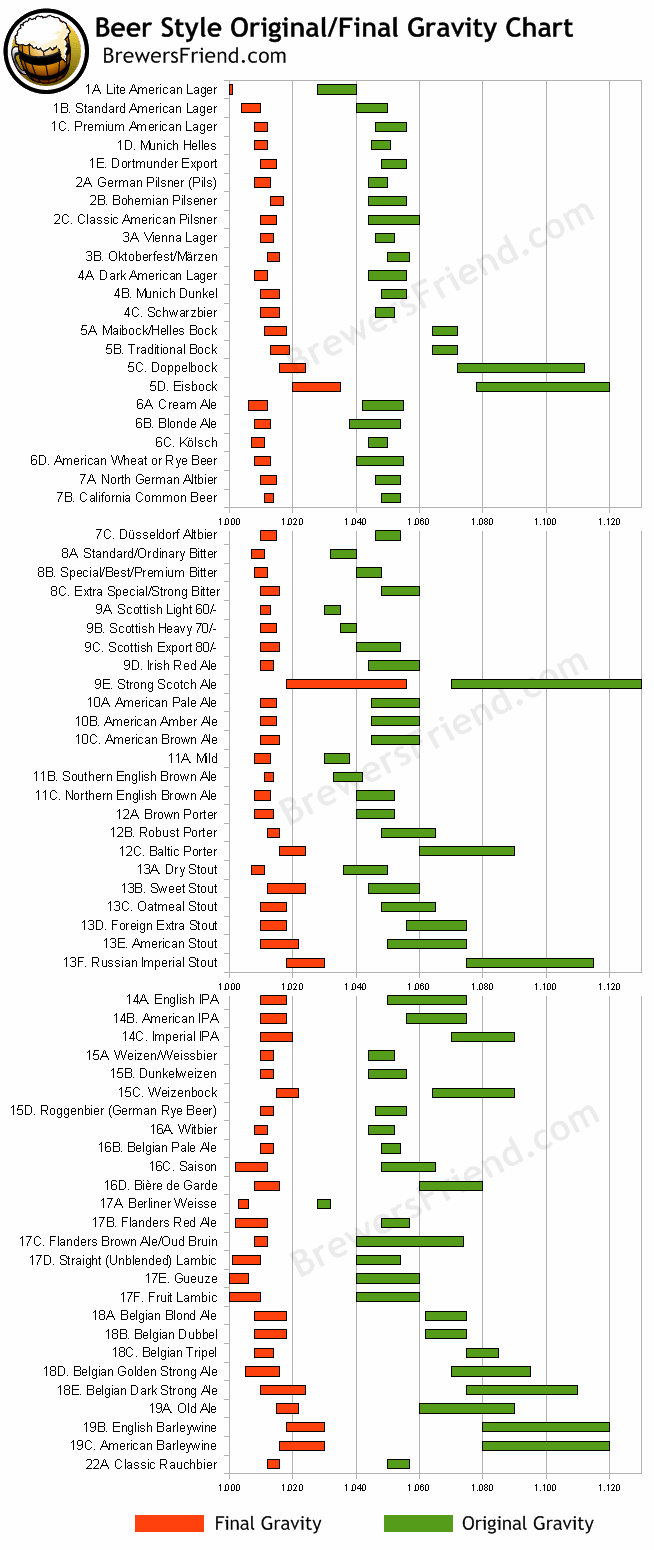Recently while browsing on the web (or maybe it was Amazon) I came across something called a periodic table of beer styles. The picture below is from here.

As if that were not cool enough, note the KEY at the bottom left hand corner which led me to the exploration of beer gravity. Here's the Wikipedia entry (which was noted as being too technical although I have seen some that are even more so):
Gravity, in the context of fermenting alcoholic beverages, refers to the specific gravity, or relative density compared to water, of the wort or must at various stages in the fermentation. The concept is used in brewing and wine making industry. Specific gravity is measured by a hydrometer, refractometer, pycnometer or oscillating U-tube electronic meter.
The density of a wort is largely dependent on the sugar content of the wort. During alcohol fermentation, yeast converts sugars into carbon dioxide and alcohol. The decline in the sugar content and the presence of ethanol (which is appreciably less dense than water) drop the density of the wort. The percentage of alcohol can be calculated from the difference between the original gravity (abbreviated OG) of the wort and the current specific gravity (abbreviated SG) of wort. By monitoring the decline in SG over time the brewer obtains information about the health and progress of the fermentation and determines that it is complete when gravity stops declining. If the fermentation is finished, the specific gravity is called the final gravity (abbreviated FG). For example, for a typical strength beer, OG could be 1.050 and FG could be 1.010.A more friendly descriptive style is here:
... what brewers mean by gravity is simply the density of the wort compared to water. The full low-down on wort is beyond the scope of this post and will be discussed one day. For now it’s safe to understand that wort is unfermented beer. Another important bit about wort is that it’s full of sugar and when the wort starts fermenting (changing into beer) that sugar gets eaten and turned into alcohol (and some other stuff).(emphasis are mine)
As I said before, gravity is the density of the wort compared to water and this is measured in comparison to water. So the density of water is 1.000 and the density of a wort may be 1.050, meaning the wort has 50 degrees of excess gravity and the beer has an original gravity of 50.
Once we’ve got the measurement of original gravity we can add yeast which starts the fermentation process. The yeast begins eating the sugar which makes alcohol (woo hoo) and carbon dioxide. Eating away at the sugar also makes everything less dense, thus lowering the gravity. Once most of the sugar has been eaten this means fermentation is done and you can now get the final gravity.
The original gravity was just the density of the wort compared to the water and so the final gravity is the density of beer compared to water. So we went from 1.050 down to something like 1.011, or a final gravity of 11. The difference in these two numbers plus some complex algebra, which I’m not getting into, is how brewers determine the alcohol by volume of a beer. The bigger the difference in original vs. final gravity means the stronger the beer. Which is why really strong beers are sometimes referred to as high gravity beers.
Another facet on the impact of gravity is that very different styles of beer can start at the same original gravity but can differ drastically in their finishing gravity. A high finishing gravity makes for a sweeter, maltier taste. A lower finishing gravity makes for a drier beer.
And here are some original vs. final gravity comparisons of different beers:

No comments:
Post a Comment